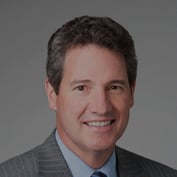Going Head To Head With The Internet
By
The amount of insurance and financial product information thats available on the Internetfree and, yes, unfilteredcontinues to astound me.
Just put “life insurance” into your favorite search engine and you will be presented with legions of links. Its the same with “health insurance,” “long term care insurance,” “annuities,” etc. For example, a “search” done on April 21, 2004, on “life insurance” brought up nearly 10 million links!
Is it any wonder that people get confused? Advisors need to keep those numbers in mind when dealing with techno-happy clients.
By the way, in the search, I entered insurance words the way many consumers do when surfing for insurance information. That is, I typed in the broad term “life insurance,” not the more specific “single premium variable universal life insurance Chicago.”
Specialists exist who study the kinds of words people enter for searches. These people help businesses decide on the “key words” to “tag” in the site to ensure the Web site will rank high in the search listings. That strategy does help firms get attention in Web searches, but it doesnt solve the content problem. Insurance professionals continue to encounter clients who mainline onand get lost inthe Internet info maze.
Even if visitors do find a good (read, accurate) insurance Web site, how can the advisor address all the misinformation the visitors find in other sites?
The question comes up because, in doing my own searches, I have many times found Web sites that feature scathing criticisms on certain insurance products while other sites tout the very same products as godsends. In too many cases, information on both sides can be wrong, out of date, distorted or confusing.
If consumers happen upon those sitesand many dothey may later show up at some advisors doorstep, armed to the teeth with this mish-mash of “facts.” Then the producer ends up unpacking all of that jumble rather than addressing the clients unique and sometimes pressing needs.








 April 29, 2004 at 08:00 PM
April 29, 2004 at 08:00 PM










